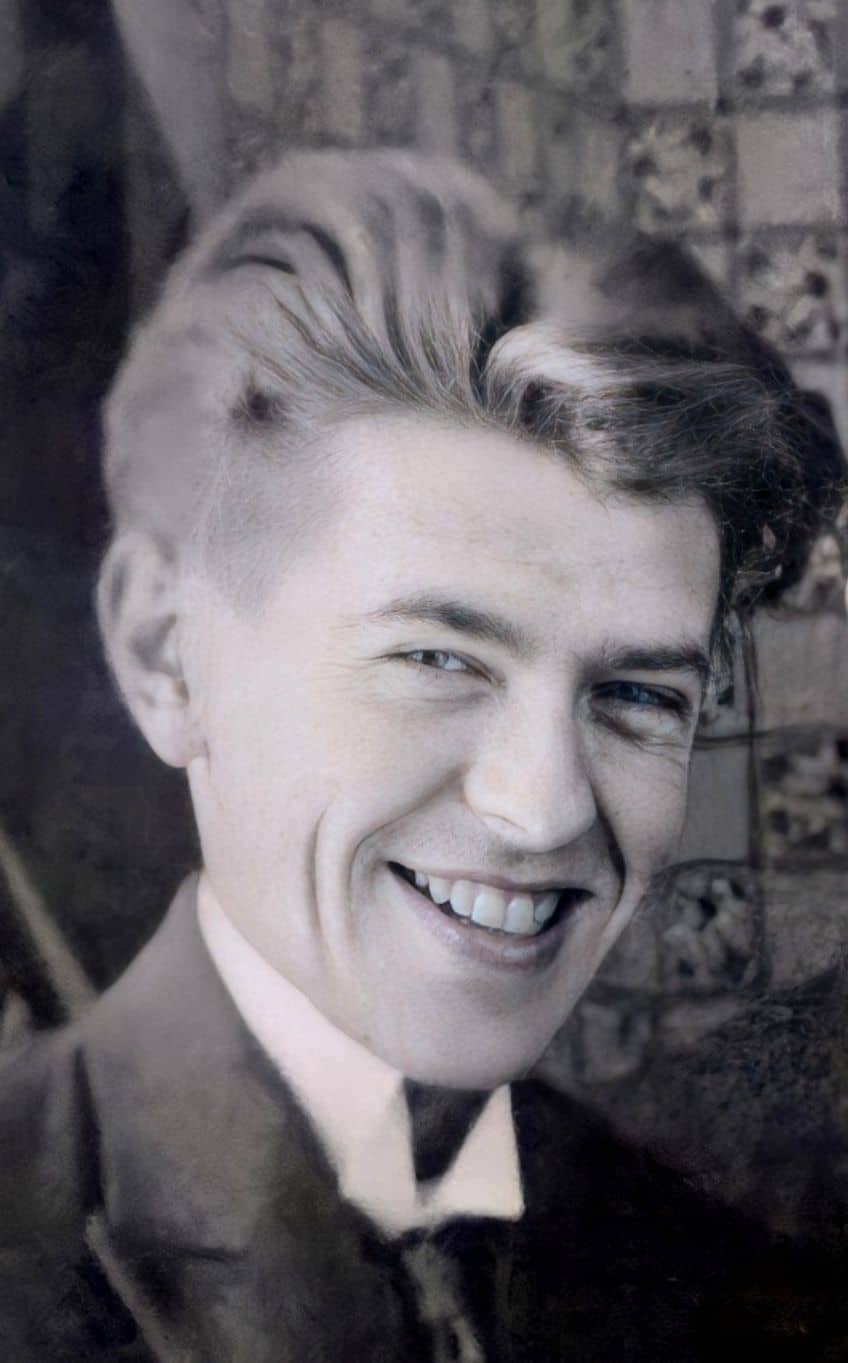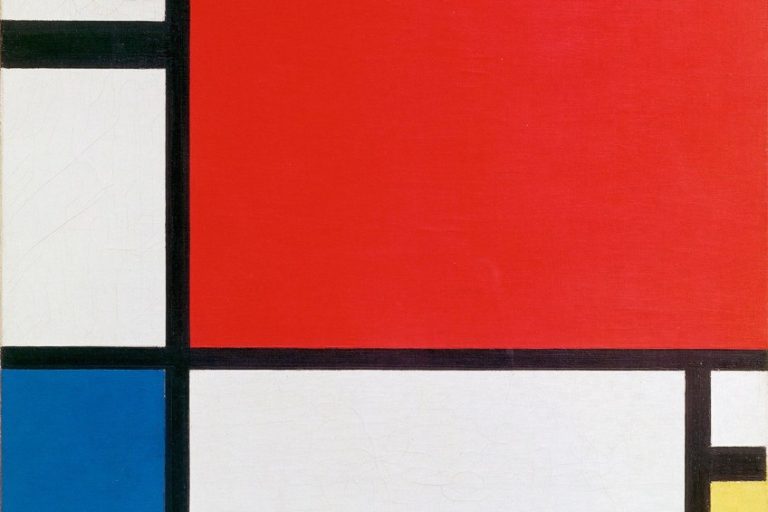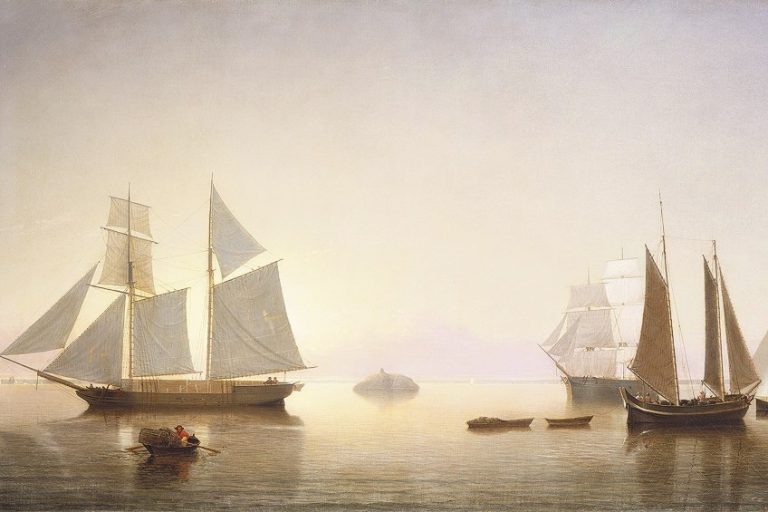René Magritte Paintings – Discover His Best 8 Works of Art
René Magritte, the Belgian surrealist master, continues to captivate audiences with his profound exploration of the human psyche and reality itself. In this investigation, we delve into Magritte’s foremost artworks, each serving as evidence of his lasting influence on the surrealist movement. Join us as we journey through eight of his iconic canvases, where the ordinary transforms into the extraordinary, and reality melds with imagination.
Table of Contents
Top 8 Paintings by René Magritte
René Magritte is renowned for his provocative exploration of reality and perception through art. His oeuvre is vast and rich, making the task of selecting from his prolific output a subjective endeavor. Nonetheless, we have curated a collection of eight iconic paintings by Magritte, each a testament to his unparalleled vision and artistic ingenuity, for you to explore below!

The False Mirror (1928)
| Date | 1928 |
| Medium | Oil on canvas |
| Dimensions (cm) | 54 x 80.9 |
| Where Is It Housed? | Museum of Modern Art, New York City, United States |
René Magritte’s The False Mirror presents a mesmerizing portrayal of an oversized eye occupying the center of the canvas, framed by a clear blue sky with fluffy clouds. The eye, traditionally seen as a symbol of perception and insight, takes on a surreal quality, inviting viewers to question the nature of observation and reality itself.
Through this iconic image, Magritte challenges conventional notions of sight and prompts contemplation on the deceptive nature of appearances.
The Lovers II (1928)
| Date | 1928 |
| Medium | Oil on canvas |
| Dimensions (cm) | 54 x 73.4 |
| Where Is It Housed? | Museum of Modern Art, New York City, United States |
The Lovers II depicts a pair of lovers locked in a passionate embrace, their faces veiled by white cloth. The juxtaposition of intimacy and anonymity creates a sense of mystery and intrigue, inviting interpretation about the complexities of human relationships and the enigmatic nature of identity.
Magritte’s use of veils suggests a barrier between the lovers and the viewer, prompting introspection about the hidden depths of emotion and connection.

The Treachery of Images (1929)
| Date | 1929 |
| Medium | Oil on canvas |
| Dimensions (cm) | 60.3 x 81.1 |
| Where Is It Housed? | Los Angeles County Museum of Art, California, United States |
Magritte’s The Treachery of Images famously depicts a pipe accompanied by the caption, “Ceci n’est pas une pipe” (“This is not a pipe”). This contradictory assertion prompts viewers to reevaluate the connection between language, depiction, and actuality.
Magritte invites us to question the authenticity of visual depictions and reminds us that the image of a pipe is merely a representation, not the object itself.

The Philosopher’s Lamp (1936)
| Date | 1936 |
| Medium | Oil on canvas |
| Dimensions (cm) | 60 x 50 |
| Where Is It Housed? | Private collection |
This work portrays a lamp with a flame illuminating a darkened room, casting shadows against the walls. The juxtaposition of light and shadow prompts contemplation on the nature of knowledge and enlightenment. Magritte’s surreal composition invites viewers to explore the interplay between illumination and obscurity.
In doing so, he is raising questions about perception and the pursuit of truth.
Not to Be Reproduced (1937)
| Date | 1937 |
| Medium | Oil on canvas |
| Dimensions (cm) | 81.3 x 65 |
| Where Is It Housed? | Museum Boijmans Van Beuningen, Rotterdam, Netherlands |
In Not to Be Reproduced, René Magritte presents a mysterious and unsettling scene featuring a man standing in front of a mirror that reflects the back of his head instead of his face. The surreal distortion of reality challenges conventional notions of reflection and identity.
Magritte’s arrangement instills a feeling of discomfort and encourages viewers to ponder concepts surrounding perception, self-awareness, and the mysterious concept of truth.

Personal Values (1952)
| Date | 1952 |
| Medium | Oil on canvas |
| Dimensions (cm) | 80 x 100 |
| Where Is It Housed? | San Francisco Museum of Modern Art, California, United States |
Personal Values by René Magritte features a collection of household objects—including a comb, a wine glass, and a birdcage—arranged in a surreal outdoor landscape. The juxtaposition of ordinary items in an unexpected setting challenges viewers to reconsider the significance of everyday objects and their symbolic meanings.
Magritte’s composition prompts reflection on the intersection of the mundane and the extraordinary, inviting interpretation about the complexities of human existence and personal identity.

Golconda (1953)
| Date | 1953 |
| Medium | Oil on canvas |
| Dimensions (cm) | 81 x 100 |
| Where Is It Housed? | The Menil Collection, Texas, United States |
Magritte presents a surreal scene of identical men dressed in business attire raining down from the sky like a deluge of human clones. The repetitive figures evoke a sense of absurdity and monotony, questioning the conformity and anonymity of modern life.
Magritte’s composition challenges viewers to confront the existential themes of individuality, mass production, and the pervasive influence of societal norms.

The Son of Man (1964)
| Date | 1964 |
| Medium | Oil on canvas |
| Dimensions (cm) | 116 x 89 |
| Where Is It Housed? | Private collection |
The Son of Man depicts a man in a bowler hat standing in front of a seaside landscape, his face obscured by a hovering green apple. The enigmatic image invites viewers to ponder the meaning behind the concealed identity and the symbolism of the apple. Magritte’s composition prompts contemplation on themes of concealment, revelation, and the elusive nature of personal identity in a world of hidden truths and uncertainties.
In conclusion, René Magritte’s surreal art challenges our perception of reality, inviting us into a world of mystery and introspection. His iconic paintings, from bowler-hatted figures to ethereal landscapes, provoke thought and curiosity. Magritte’s enduring legacy as a visionary artist transcends time, inspiring generations with his provocative imagination!
Frequently Asked Questions
What Themes Are Commonly Explored in René Magritte’s Paintings?
René Magritte’s paintings often delve into themes of surrealism, identity, perception, and the nature of reality. His artworks frequently feature juxtapositions of ordinary objects in unexpected contexts, challenging viewers to question the meanings behind familiar images and symbols.
Why Did René Magritte Frequently Depict Bowler-Hatted Men in His Paintings?
René Magritte’s recurring motif of bowler-hatted men symbolizes the anonymity and conformity of individuals within society. By depicting faceless figures in formal attire, Magritte explores themes of identity, individuality, and the suppression of personal expression. The bowler-hatted figures act as mysterious symbols, prompting reflection on the intricacies of human life and the quest for significance in what appears to be an ordinary reality.
Isabella studied at the University of Cape Town in South Africa and graduated with a Bachelor of Arts majoring in English Literature & Language and Psychology. Throughout her undergraduate years, she took Art History as an additional subject and absolutely loved it. Building on from her art history knowledge that began in high school, art has always been a particular area of fascination for her. From learning about artworks previously unknown to her, or sharpening her existing understanding of specific works, the ability to continue learning within this interesting sphere excites her greatly.
Her focal points of interest in art history encompass profiling specific artists and art movements, as it is these areas where she is able to really dig deep into the rich narrative of the art world. Additionally, she particularly enjoys exploring the different artistic styles of the 20th century, as well as the important impact that female artists have had on the development of art history.
Learn more about Isabella Meyer and the Art in Context Team.
Cite this Article
Isabella, Meyer, “René Magritte Paintings – Discover His Best 8 Works of Art.” Art in Context. February 14, 2024. URL: https://artincontext.org/rene-magritte-paintings/
Meyer, I. (2024, 14 February). René Magritte Paintings – Discover His Best 8 Works of Art. Art in Context. https://artincontext.org/rene-magritte-paintings/
Meyer, Isabella. “René Magritte Paintings – Discover His Best 8 Works of Art.” Art in Context, February 14, 2024. https://artincontext.org/rene-magritte-paintings/.











